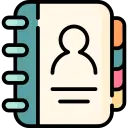IGNOU MZO-04 (January 2025 – December 2025) Assignment Questions
1. Discuss the evidence supporting the RNA World Hypothesis and its implications for understanding the transition from prebiotic chemistry to cellular life.
2. Discuss the role of horizontal gene transfer in shaping the evolutionary relationships among domains of life.
3. What is the concept of speciation in bacteria, and how does it differ from speciation in eukaryotic organisms?
4. What is the molecular clock? Describe how is it used to estimate the timing of evolutionary events?
5. How did endosymbiosis contribute to the evolution of eukaryotic genomes, and what evidence supports the theory of endosymbiotic origin for organelles like mitochondria and chloroplasts?
6. Describe the role played by genomic changes, such as chromosomal rearrangements, gene duplications, and regulatory divergence, in the process of speciation?
7. What are the key differences between the artificial and natural systems of classification? Differentiate between diploblastic and triploblastic animals based on any five characteristics.
8. What is Taxonomic diversity? Describe its various types.
9. Describe the different stages in the origin of Homo sapiens. Also, draw a well-labeled human evolution tree.
10. Describe the following:
a) Abiogenesis
b) Phylogenetic tree
c) Exon shuffling
d) Artificial speciation
IGNOU MZO-04 (January 2024 – December 2024) Assignment Questions
1. What is evolution? Describe the Charles Darwin’s theory of evolution.
2. Describe any two theories associated with the origin of life.
3. Describe the concept of speciation in bacteria.
4. What is molecular divergence? Describe the proteins that are studied as an example of Molecular clock.
5. Describe the divergence of Bacteria and Archaea in terms of replication and translation systems.
6. Describe any two agents of Horizontal gene transfer with the help of suitable diagrams.
7. Compare the cellular and molecular characteristics of Bacteria, Archaea and Eukaryotes.
8. Discuss the origin of multicellularity and evolution of bilateral symmetry in animals.
9. Describe the consequences of genome and gene duplications.
10. Define the following:
a) Pseudogene
b) Genetic drift
c) Cladogenesis
d) Biosystematics










